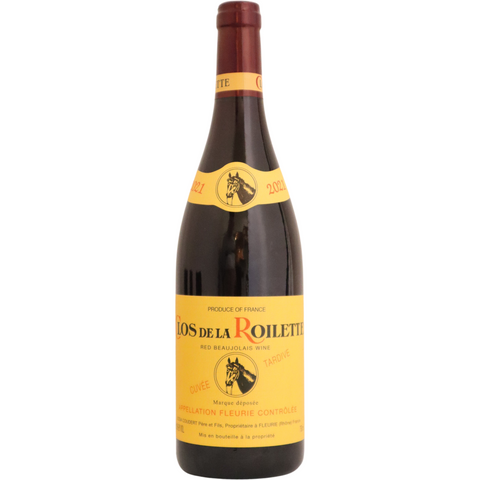
2023 Clos de la Roilette Fleurie "Cuvée Tardive", Beaujolais, France
The palate is creamy, earthy and floral on the attack then develops vivid flavors of black raspberry and crushed strawberry layered over earthy spice and stone. The finish is long and mineral and ends on a slightly citrus note.
ABOUT THIS WINE
100% Gamay. Being on the border of the Moulin-à-Vent cru, the core of Roilette’s Fleurie terroir is atypical of Fleurie, rich in clay and the mineral manganese instead of being all granite; the wines are thus more structured than many Fleurie wines. The oldest estate vines, at around 80 years old, go into the Cuvée Tardive bottling. It is the concentration and structure of the wine that gave rise to its “Tardive” or “late” moniker: it is not late-harvested fruit but rather wine meant to be enjoyed later, with longer aging in bottle.
As on the rest of the estate, the Tardive vines are farmed sustainably by lutte raisonnée and the soils worked by hand, only twice a year and very carefully in order to not do damage to roots of these old vines. The fruit is manually harvested and fermented in whole clusters with native yeasts in open-top, neutral wood vats with the cap kept submerged; the maceration for Tardive is approximately 18 days. Aging takes place in old foudres until bottling the following summer.
ABOUT THIS PRODUCER
In the 1920s, when the Fleurie appellation was first created, the former landowner was infuriated with losing the Moulin-à-Vent appellation under which he had previously been classified. He created a label, using a photograph of his horse Roilette, and used the name Clos de la Roilette, without mentioning Fleurie. The current label does mention the name of the appellation, but only as a subscript.
Coudert's Fleurie, often better known as "that delicious wine with the Horse on the label", comes from the Clos de la Roilette, in the village of Fleurie The vineyard has an eastern exposure that borders the Moulin-à-Vent and is situated on one of the best slopes in the Beaujolais Crus. Father-son winemaking team, Fernand and Alain Coudert, say their particular terroir (mainly clay and manganese), and the age of their vines (25 to 33 years-old) account for the richness of their Fleurie.
